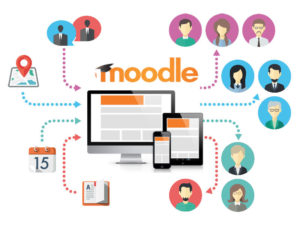 Corporate learning technologies have been buffeted by change. Employees, frustrated with internal learning options were looking outside their organizations for new learning resources, forcing employers to reconsider whether legacy technology platforms were meeting workforce needs.
Corporate learning technologies have been buffeted by change. Employees, frustrated with internal learning options were looking outside their organizations for new learning resources, forcing employers to reconsider whether legacy technology platforms were meeting workforce needs.
This profound shift in learning preferences and need for content better tailored to rapidly changing business environments has fueled the rise of a bevy of new vendor systems that are more consumer-like, user-friendly, and personalized to employee needs.
eLearning courses and classroom training now seem dated or cumbersome given the vast amount of content available to employees through YouTube; social media networks; learning platforms like Lynda.com, Coursera, and Udacity; blogs; and external podcasts.
Industry vendors seeking to bring these more modern learning approaches into organizations have unveiled new digital platforms featuring micro-learning content, systems designed to aggregate and curate content from external and internal sources, tools that allow employees to author their content, and artificial intelligence that can recommend learning experiences based on past preferences or career stage.
These technology disruptions have many Chief Learning Officers (CLOs) and training directors rethinking how learning and development should look at their companies.
Requiem for the Legacy LMS
 Technology innovations have pushed legacy platforms like Learning Management Systems (LMS) to the background while more learner-friendly, content-rich systems assume center stage. While the LMS will continue to have value for purposes like tracking mandatory compliance training, many organizations have new content and usability needs that surpass what traditional LMS technology can provide.
Technology innovations have pushed legacy platforms like Learning Management Systems (LMS) to the background while more learner-friendly, content-rich systems assume center stage. While the LMS will continue to have value for purposes like tracking mandatory compliance training, many organizations have new content and usability needs that surpass what traditional LMS technology can provide.
The traditional LMS is no longer the centerpiece of corporate learning technology the way it was five years ago. In most larger organizations, it is now just one part of an ecosystem of learning technologies, used primarily for tracking formal eLearning and classroom training. Because those two forms of education have assumed a lower ranking in the learning hierarchy and it’s not surprising the LMS has followed suit.
Vendors like Workday, Cornerstone OnDemand, and Oracle that have worked to reinvent their traditional LMSs by adding new content-creation tools or user-friendly interfaces would probably love to throw away the LMS term entirely, but it’s the term HR buyers and procurement professionals have come to know, and a better name hasn’t emerged.
Recent industry surveys reflect changing needs around learning technologies. Sierra-Cedar’s 2016 – 2017 HR Systems Survey found that 24 percent of respondents were re-evaluating their current LMS. That’s a higher percentage than any other area in the study in terms of rethinking the value of an existing talent management technology.
Thirty percent of those planning to replace their LMS were looking for an improved user experience and another 35 percent were seeking improved functionality. That tells me that many of today’s LMS platforms don’t have the features or functionality required for a changing learning market.
According to a 2017 survey of the Chief Learning Officer Business Intelligence Board, 44 percent of learning executives now see technology as either an ‘essential‘ or ‘high‘ investment priority. That ranked just behind CLO’s top priority, which was the strategy, the board consists of 1,500 professionals across industries in the learning and development industry.
New Vendors Emerge
 When the Sierra-Cedar survey asked organizations which additional vendors beyond their LMS played a key role in rounding out a learning environment, content providers topped the list. With content needs changing, today’s LMS must be able to support a wider variety of more learner-friendly formats and just providing proprietary content won’t cut it anymore.
When the Sierra-Cedar survey asked organizations which additional vendors beyond their LMS played a key role in rounding out a learning environment, content providers topped the list. With content needs changing, today’s LMS must be able to support a wider variety of more learner-friendly formats and just providing proprietary content won’t cut it anymore.
A dearth of learning content built for time-starved employees and fast-moving business environments has led to the rise of new vendors offering services that amplify LMS functions. That includes companies delivering micro-learning solutions and others focused on ‘longer-form‘ immersion learning.
The third category of new vendors focuses on aggregating and curating learning content from internal and external sources, offering user-friendly interfaces that allow employees to quickly find learning content at the moment of need.
Organizations have become more sophisticated in recognizing that learning is about more than taking formal courses and classes and are aligning themselves with these new technology platforms. These vendors have reinvented the learning experience and are providing things that the traditional LMS simply can’t.
A maturing technology called Experience API (xAPI) allows organizations to better track and manage this new constellation of learning activities and options. Experience API represents an evolution of the predecessor Shareable Content Object Reference Model (SCORM), since it’s not limited to managing e-learning courses or learning management systems and can track and document a wider range of learning experiences.
It’s a means by which companies can capture data from learning activities across the enterprise to place them into a bigger picture for employees and say, ‘Here are all the things you’ve done and could do to grow yourself professionally.’ xAPI can capture data like stretch assignments, coaching sessions, articles read, and courses completed, and then create a record of all online and offline learning experiences.
Artificial Intelligence Gains Traction
 Learning technology vendors also have added Artificial Intelligence (AI) and machine learning capabilities to their platforms. These tools can recommend learning activities based on employees’ past preferences or where they are on a career path. There is intelligence built into some of these systems now that can identify content that’s appropriate at a specific point in an employee’s career or based on learning experiences they did or didn’t like in the past.
Learning technology vendors also have added Artificial Intelligence (AI) and machine learning capabilities to their platforms. These tools can recommend learning activities based on employees’ past preferences or where they are on a career path. There is intelligence built into some of these systems now that can identify content that’s appropriate at a specific point in an employee’s career or based on learning experiences they did or didn’t like in the past.
For example, some technologies use AI that learns about a work team and makes continuous learning recommendations to help improve individual and team performance. The ability of learning platforms to integrate with other talent management systems can make AI more effective.
If an LMS can’t easily access performance management evaluations, for example, the learning platform won’t be able to correctly recommend the kind of learning opportunities employees should pursue based on information in those evaluations.
Integrations between learning platforms, human resource management systems, and other talent platforms need to be extraordinarily tight for those recommendation purposes.
Let us know what you think.




Responses